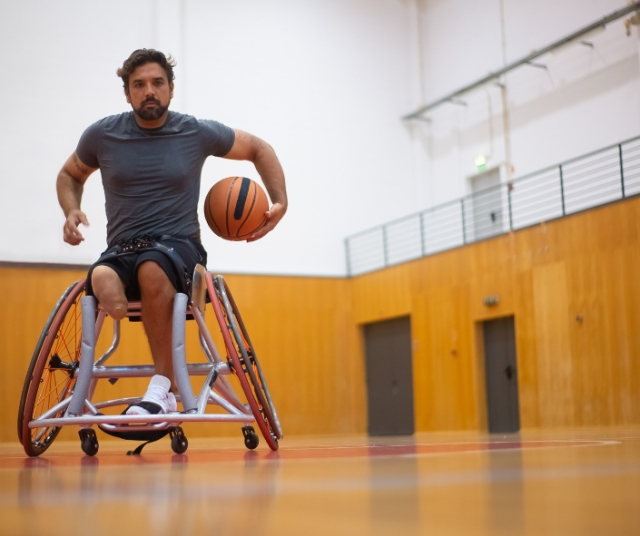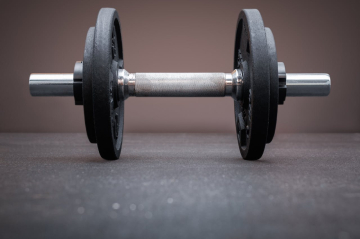Sport is a powerful tool that can transcend physical and mental barriers, and offer opportunities for personal, social and physical development for people with disabilities. Throughout history, a wide range of adapted sports have been developed that allow individuals with disabilities to actively participate in sports and recreational activities. In this article, we will explore the process of adapting sports for people with disabilities and highlight four of them that have gained popularity and recognition worldwide.
Adapted Sport.
Adapted sport, also known as disability sport or inclusive sport, refers to sporting activities that have been modified or adapted to allow the participation of people with disabilities. These sports may include adjustments to the rules, equipment or playing environment to ensure that all people, regardless of physical or cognitive abilities, can enjoy the sporting experience.
The development of adapted sport has been fundamental to promote the inclusion, equal opportunities and empowerment of people with disabilities in the sporting field and beyond. Over the years, international, national and local organizations dedicated to the development and promotion of adaptive sport have been established, providing support and resources for athletes with disabilities around the world.
Process of Adaptation of Sports for People with Disabilities.
The process of adapting sports for people with disabilities has been a continuous and evolutionary process, driven by the need to guarantee accessibility and inclusion in the sporting field. Some of the key aspects of the adaptation process include:
Investigation and development.
The adaptation process usually begins with research and development of new ways of playing sports for people with disabilities. This may involve collaboration between athletes, coaches, health professionals and designers to identify the specific needs of each sport and propose innovative solutions.
Modifications to rules and equipment.
Once accommodation needs are identified, modifications can be made to the rules and equipment of existing sports to make them more accessible to people with disabilities. This may include changes to the size of playing fields, the design of equipment, or the introduction of assistive technology to facilitate the participation of athletes with disabilities.
Training and qualification.
It is essential to provide adequate training and training to athletes, coaches and support staff involved in adaptive sport. This may include teaching specific playing techniques, familiarization with adapted equipment and raising awareness of the needs and abilities of people with disabilities.
Creation of accessible infrastructure.
To guarantee the accessibility of adapted sports, it is necessary to have adequate infrastructure that meets accessibility and safety standards. This may include the construction of accessible sports facilities, the adaptation of existing spaces and the provision of accessible transport for athletes with disabilities.
Promotion and awareness.
Promotion and awareness are key aspects of the adaptation process, as they help to increase awareness of the importance of adaptive sport and foster a culture of inclusion and acceptance in society. This may involve organizing inclusive sporting events, public awareness campaigns and disability and accessibility education programmes.
Four Featured Adaptive Sports.
Wheelchair Basketball.
Wheelchair basketball is one of the most popular and recognized adaptive sports worldwide. Based on conventional basketball, this sport is played in specially designed wheelchairs and follows the same rules as standard basketball. Wheelchair basketball offers an exciting and competitive sports experience for people with physical disabilities, promoting coordination, agility and teamwork.
Athletics.
Adaptive athletics includes a variety of athletic events designed for people with disabilities, such as wheelchair racing, long jump, discus throw, and javelin throw. This sport offers opportunities for athletes with physical, visual and intellectual disabilities to participate in competitions at the local, national and international level. Adaptive athletics promotes self-improvement, resilience and determination, and is an exciting way to get involved in sport for people with disabilities.
Swimming.
Adapted swimming is another popular sports discipline among people with disabilities, offering a form of physical exercise, recreation and competition. People with physical, visual and intellectual disabilities can participate in a variety of adaptive swimming events, including freestyle, backstroke, breaststroke and butterfly races, as well as relays and medley events. Adaptive swimming promotes strength, endurance and coordination, and provides an opportunity for athletes with disabilities to compete at national and international levels.
Goalball.
Goalball is a team sport designed specifically for people with visual impairments, offering a unique and exciting sporting experience. Goalball is played on a covered court with teams of three players, who try to score goals by throwing a ball with bells towards the opposing team's goal. Players must rely on their hearing and sense of touch to detect the position of the ball and defend their goal. Goalball promotes communication, cooperation and sensory awareness, and is a fun and challenging way to participate in sport for people with visual impairments.
Adaptive sports have transformed the way people with disabilities participate in sports and recreational activities around the world. Thanks to the development and promotion of adapted sports, people with disabilities have the opportunity to enjoy the benefits of sport, including improving physical and mental health, developing social skills and promoting self-esteem and self-confidence. themselves. Furthermore, adapted sports promote inclusion, diversity and respect for people with disabilities, thus contributing to the construction of a more just and equitable society for all.






